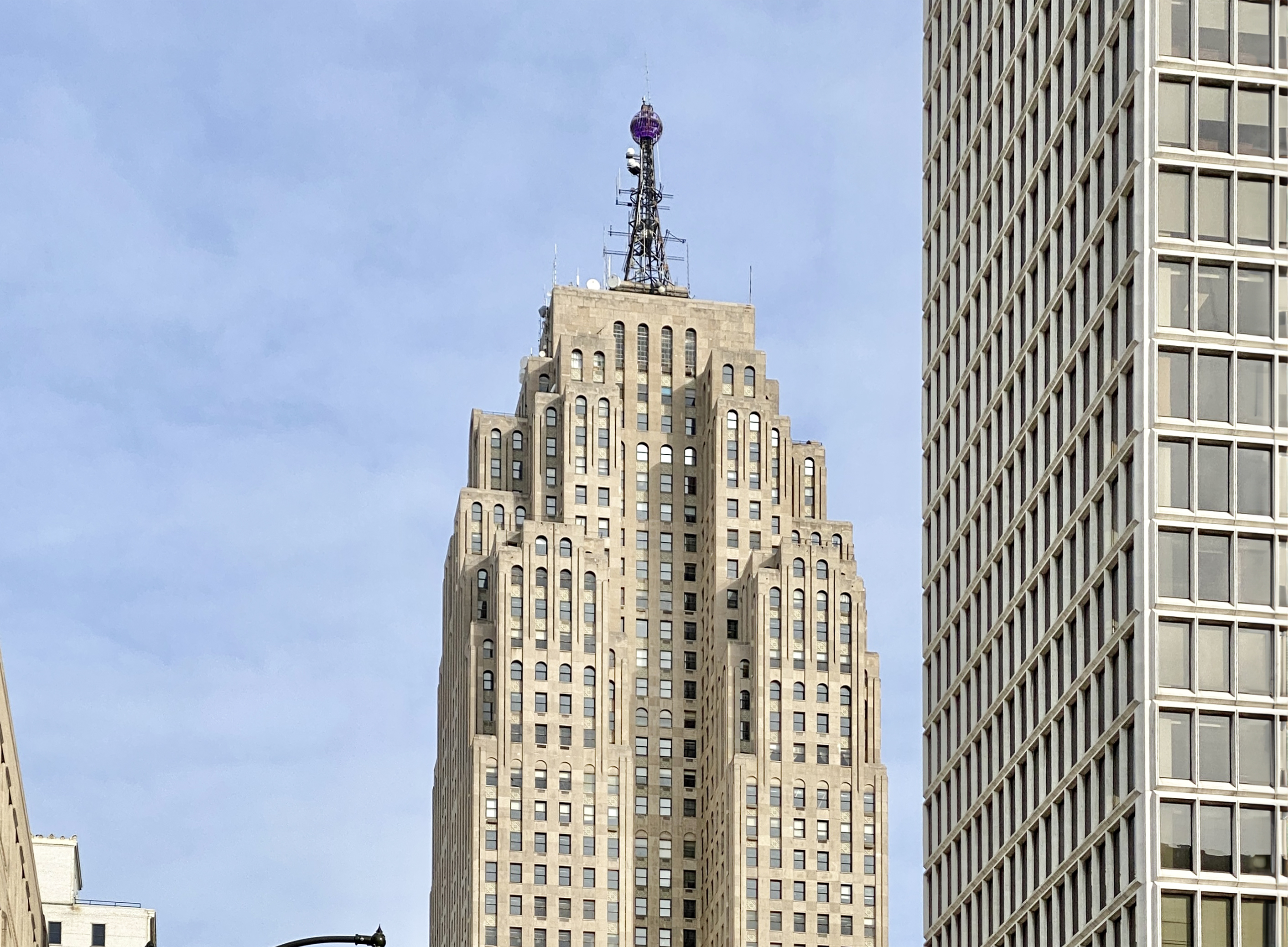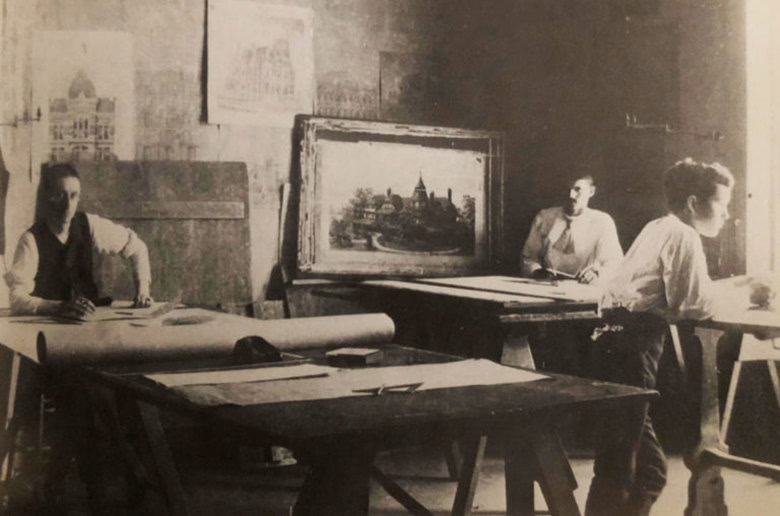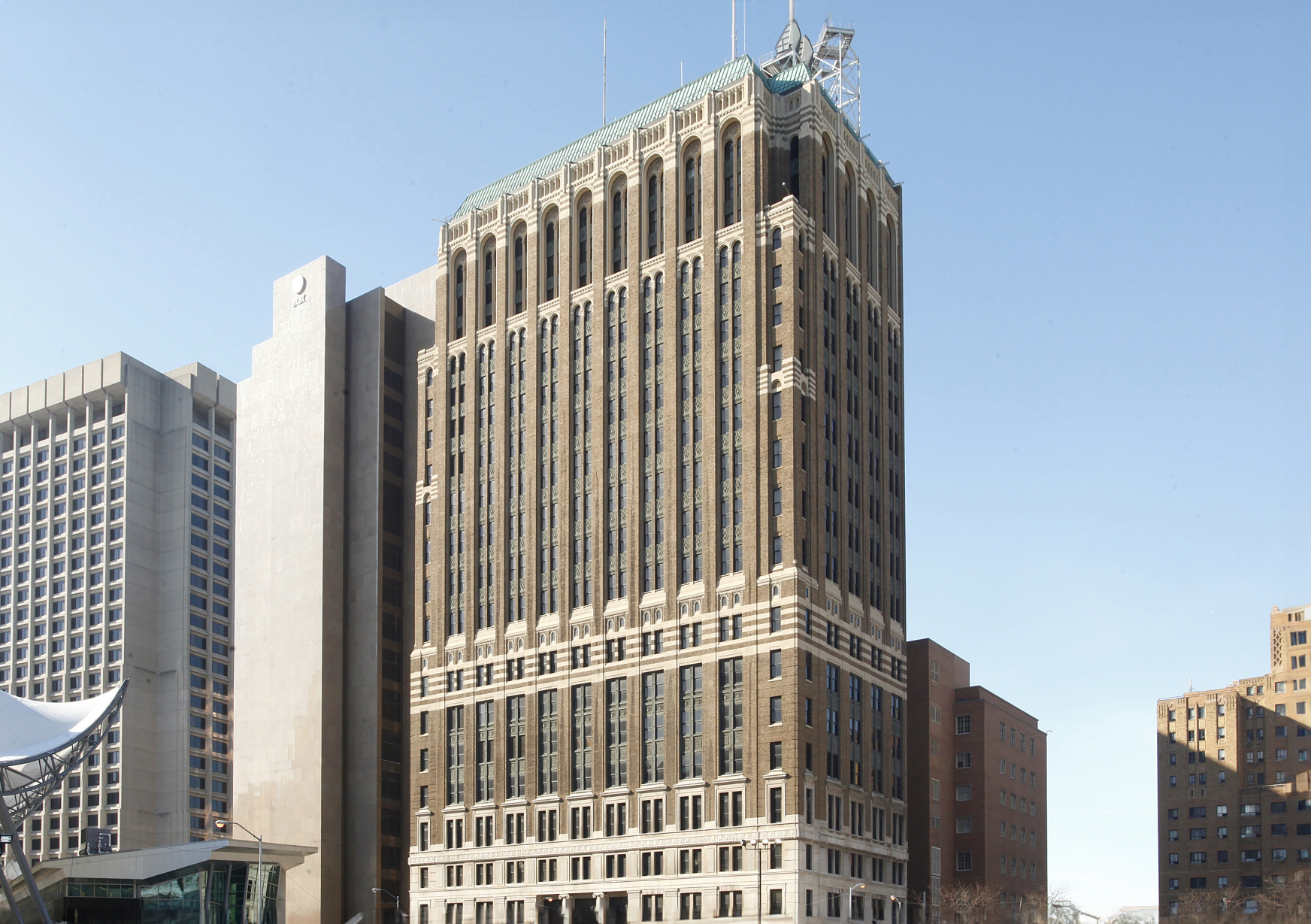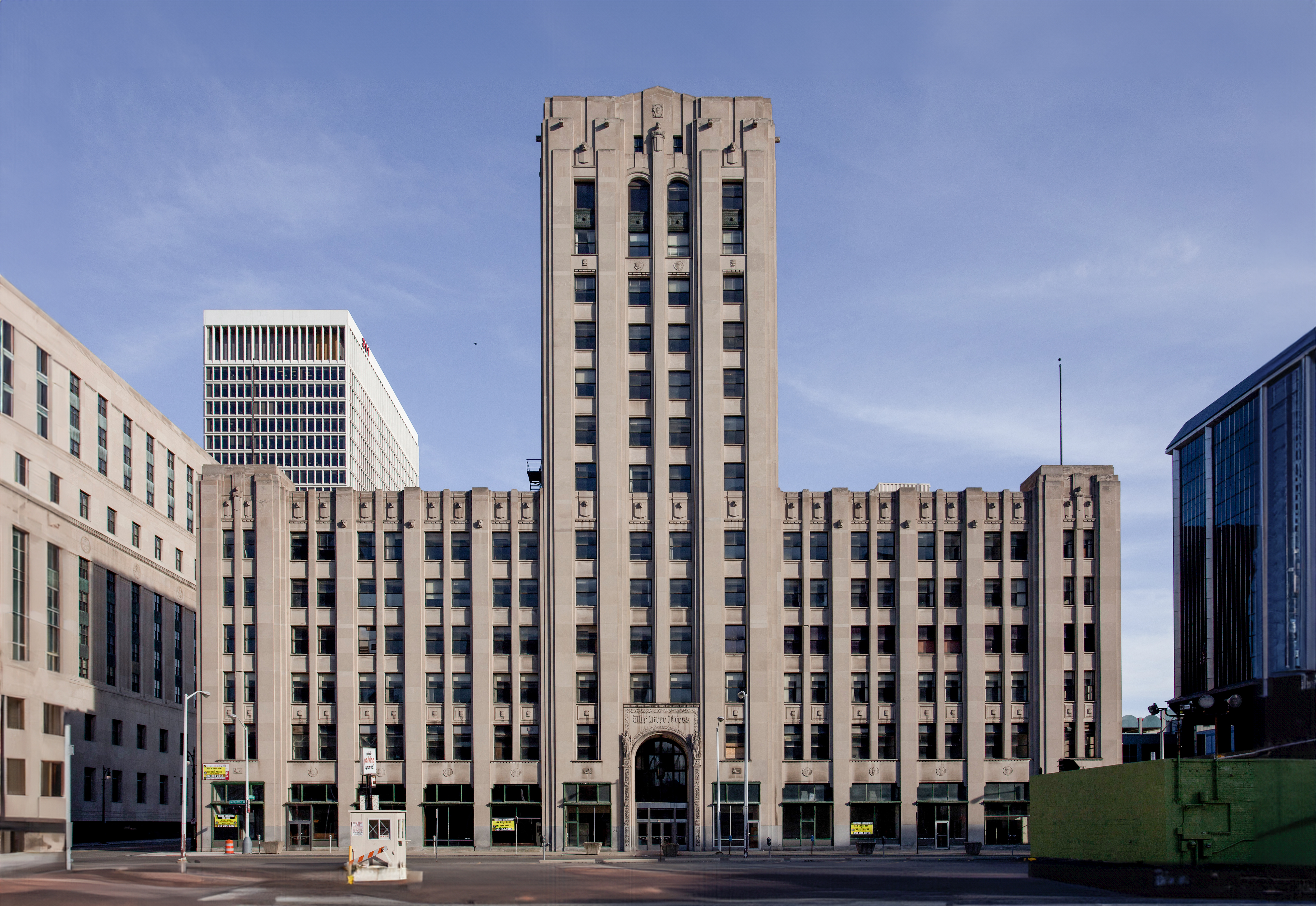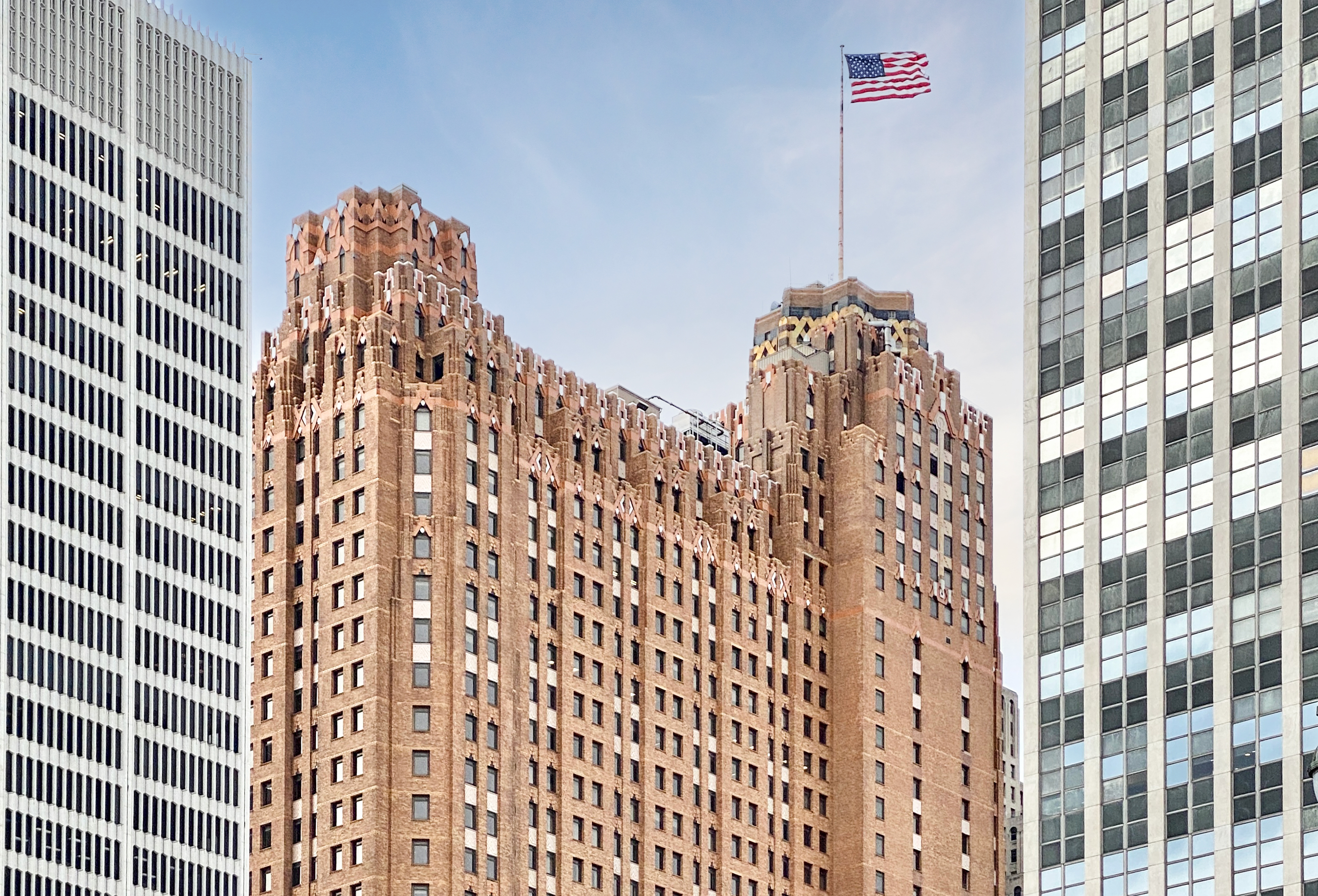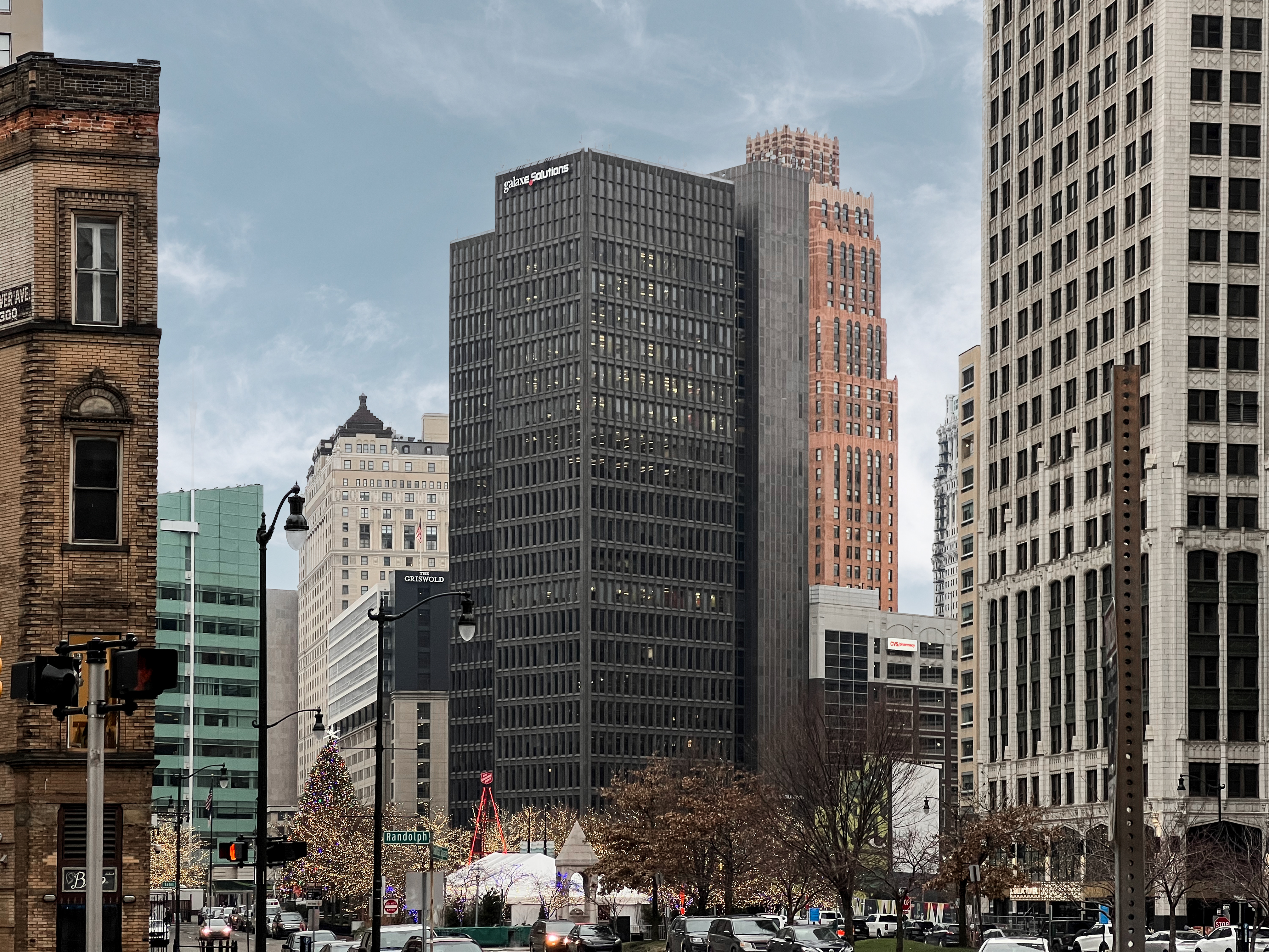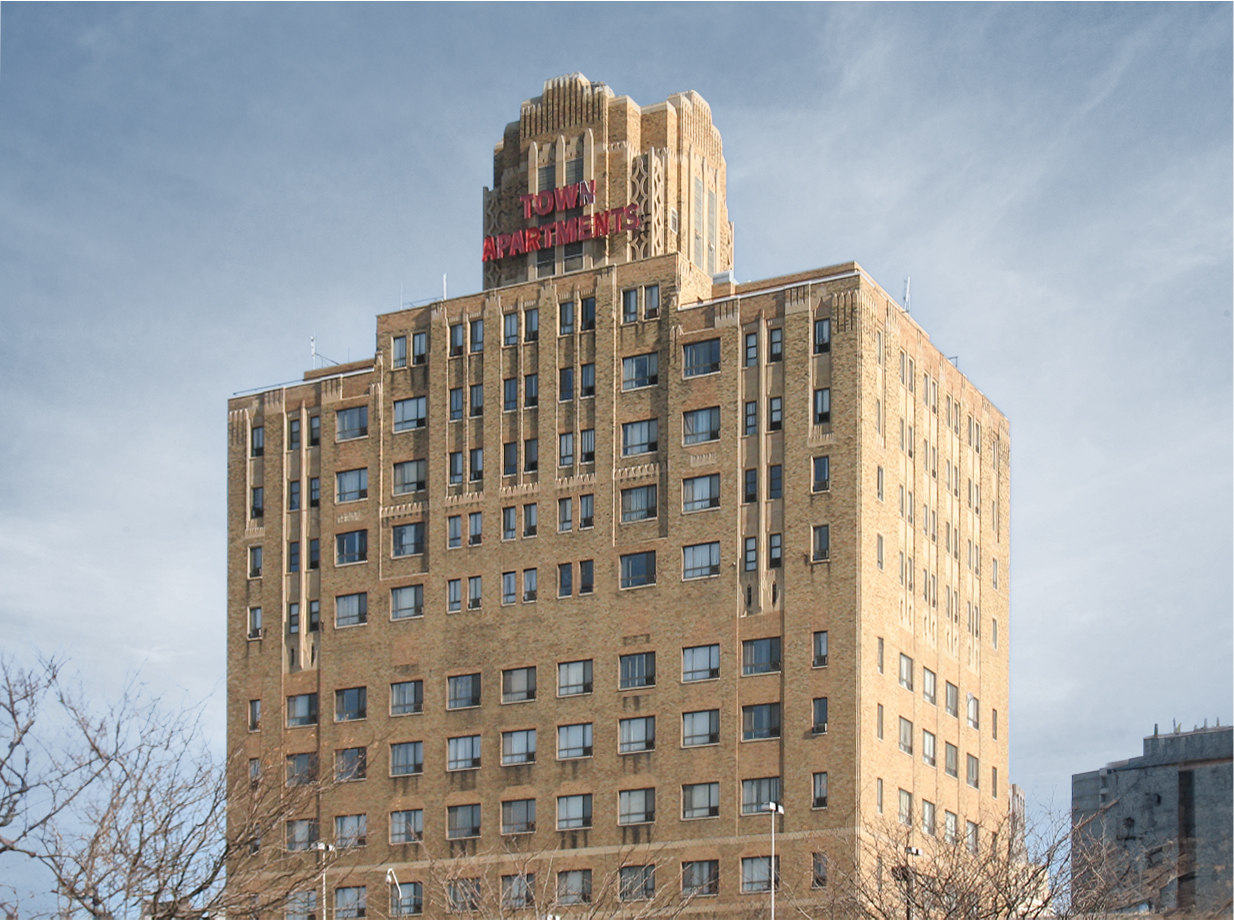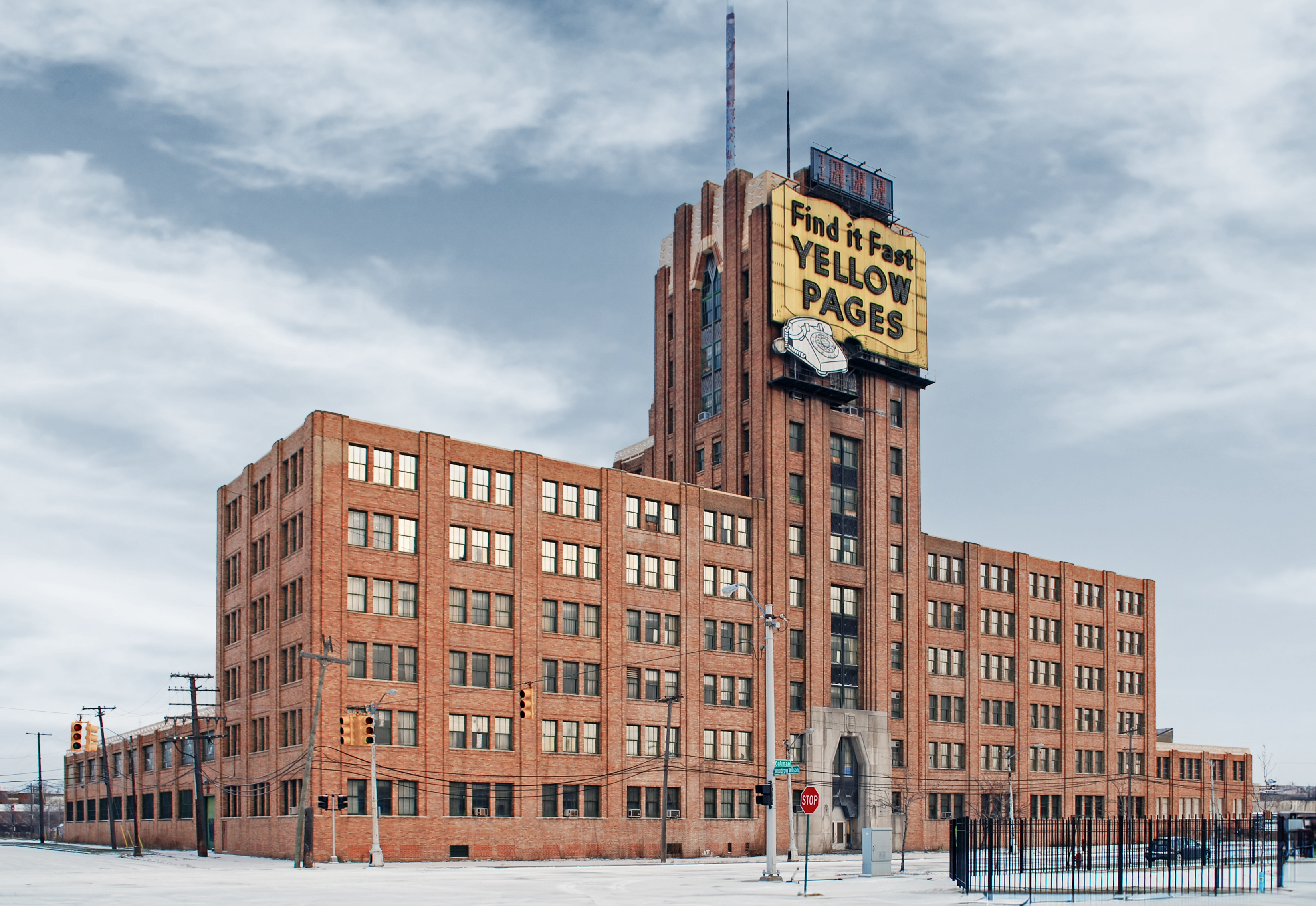The Penobscot Building is an Art-deco skyscraper designed by Smith, Hinchman & Grylls, and built between 1927 and 1928, for a reported $5.00 million dollars, in Detroit, MI.
Penobscot Building is not the only name you might know this building by though. It is common for companies to want to attach their names to iconic buildings when they move in, or for the general public to come up with nicknames, and this one is no exception. The Penobscot Building is also known, or has been known as, Greater Penobscot Building, or City National Bank Building.
Its precise street address is 645 Griswold Street, Detroit, MI. You can also find it on the map here.
At the time of its completion in 1928 the Penobscot Building incorporated solutions that were quite advanced at the time, these included a 3.33m diameter red orb, which was placed at the end of the antenna that lights up at night and served as a beacon for aviation.
